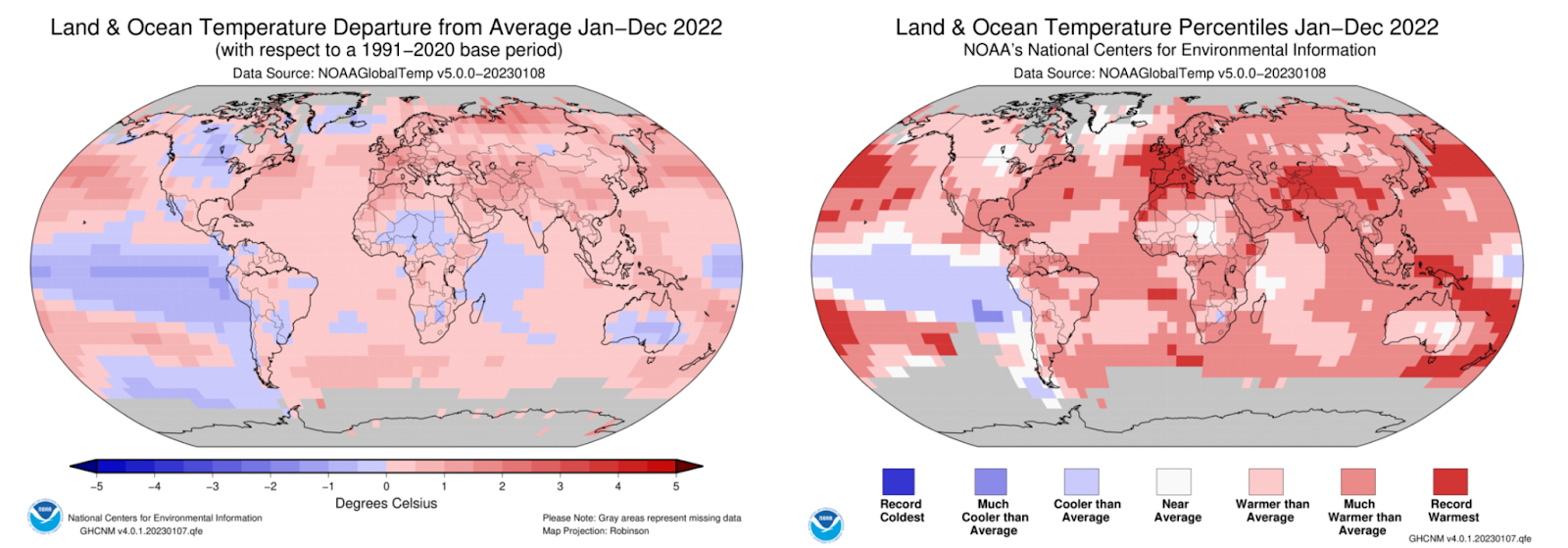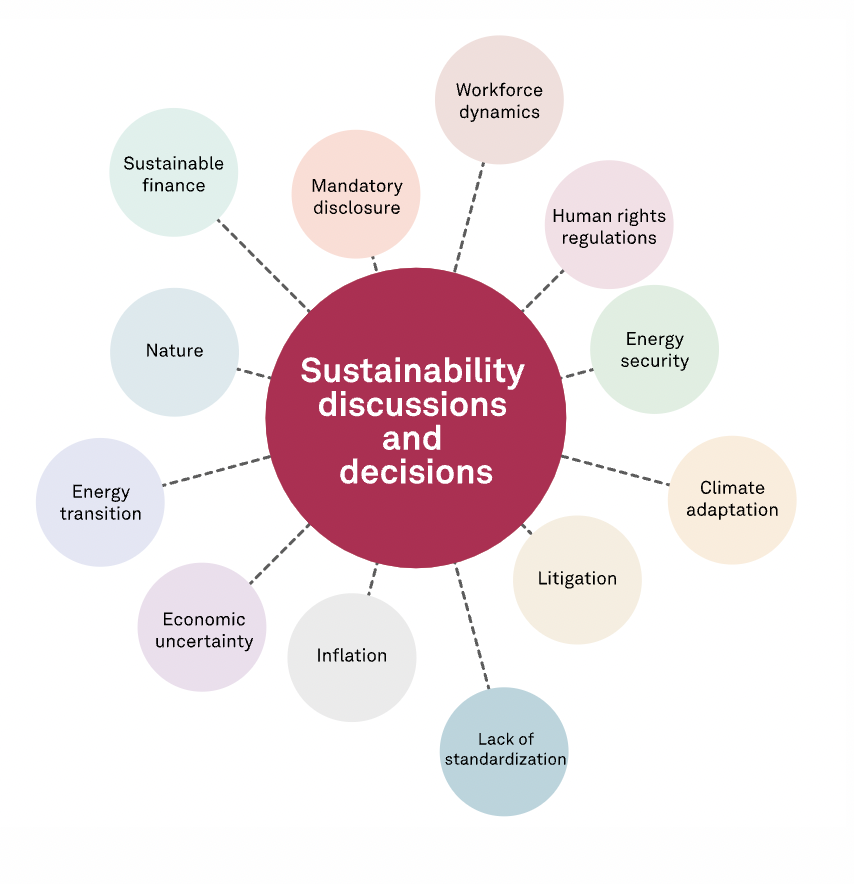Shifting Regulatory, Political, and Economic Forces Will Drive Changes in ESG Initiatives
The impact of climate change doesn’t stay constant from year to year. Instead, it deepens and evolves due to ongoing shifts in the earth’s temperature. In 2022 alone, according to the National Centers for Environmental Information, each monthly global surface temperature ranked among the 10 warmest ever recorded for their respective month.
All this extra heat takes a significant toll on the environment by “driving regional and seasonal temperature extremes, reducing snow cover and sea ice, intensifying heavy rainfall, and changing habitat ranges for plants and animals,” the National Oceanic and Atmospheric Administration noted in a January 2023 report.

Photo Courtesy ncei.noaa.gov
These changes mean climate scientists must reassess the most immediate threats and act accordingly. In turn, government and corporate climate leaders must adapt to shifts in climate research and various other factors. In 2023, those factors include “geopolitical turmoil, persistent inflation, looming recession and worsening physical impacts of climate change,” according to a sustainability report from S&P Global.
The report, released in January, was led by Lai Ly, Global Head of ESG Research at S&P Global Ratings, and Lindsey Hall, Head of ESG Thought Leadership at S&P Global Sustainable.
The report outlined nine sustainability trends in 2023 that will drive decision-making on climate leaders. Many of those trends involve regulatory rules.

Photo Courtesy S&P Global
“As new sustainability disclosure standards come into effect around the globe, stakeholders will have to grapple with the complexity and potential challenges regarding alignment of these initiatives,” the authors wrote. “The increasing risk of environmental, social and governance (ESG)-related litigation – including over sustainability disclosure – will be another challenge for companies and investors to navigate.”
Climate change and related topics such as water scarcity and biodiversity loss are “likely to dominate stakeholder discussions,” the report said. In contrast, long-term climate goals could be reassessed to address more urgent needs better.
The authors also noted that sustainable employment practices implemented in recent years “will be challenged by recessionary risks in many markets.” In addition, new supply-chain management practices are likely to face new human rights regulations.

Photo Courtesy S&P Global
“These trends highlight the delicate balancing act we see stakeholders facing and managing, weighing various and sometimes opposing forces,” the report said.
“As an example, long-term energy transition goals will be weighed alongside nearer-term considerations such as energy affordability and security. Progressive employment practices implemented in the wake of COVID-19 will be tested by cost-cutting related to economic uncertainty. This push-and-pull dynamic could be a hallmark of sustainability discussions and decisions throughout 2023.”
Here’s a look at some of the major trends cited in the report:
- New sustainability disclosure standards: Last year brought updated climate-related disclosure standards from the European Financial Reporting Advisory Group, the U.S. Securities and Exchange Commission, and the newly formed International Sustainability Standards Board, among others. Most aim to “enhance transparency and consistency on sustainability-related issues” and lower the risk of greenwashing in financial markets.
- Increasing risk of sustainability-related litigation: S&P Global predicts that the growing risk of ESG-related litigation will test both companies and investors on the “strength and depth” of their sustainability commitments.
- Shifting climate strategies amid concerns over energy security and affordability: Part of this shift has been driven by the Russia-Ukraine war, which disrupted the world’s oil supply. Some nations “loosened restrictions” on coal-fired power plants, while others extended the lives of coal and nuclear power plants. For 2023, S&P Global predicts that countries and companies will consider “balancing energy security, affordability, and the energy transition” in the context of high inflation and rising interest rates.
- Water-related risks will increase: Investors and companies will “seek to assess the social and financial costs” associated with water scarcity and droughts, which have risen in recent years. S&P Global noted that agribusinesses are “particularly sensitive” to water scarcity, which has contributed to costlier irrigation systems, crop damage, and weak harvests, heightening worries over food security and supplies.
- The sustainable bond market will face credibility challenges and market uncertainty: The global market for green, social, sustainability, and sustainability-linked bonds (GSSSBs) declined in 2022 vs. 2021, hampered by the risk of recession in many parts of the world. S&P Global expects GSSSBs to face “ongoing questions about the effectiveness of sustainable debt” in helping companies reach their sustainability goals.





